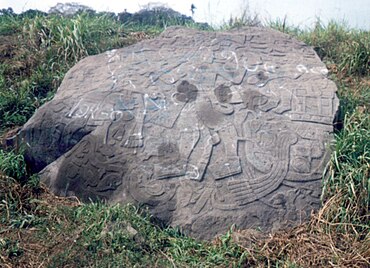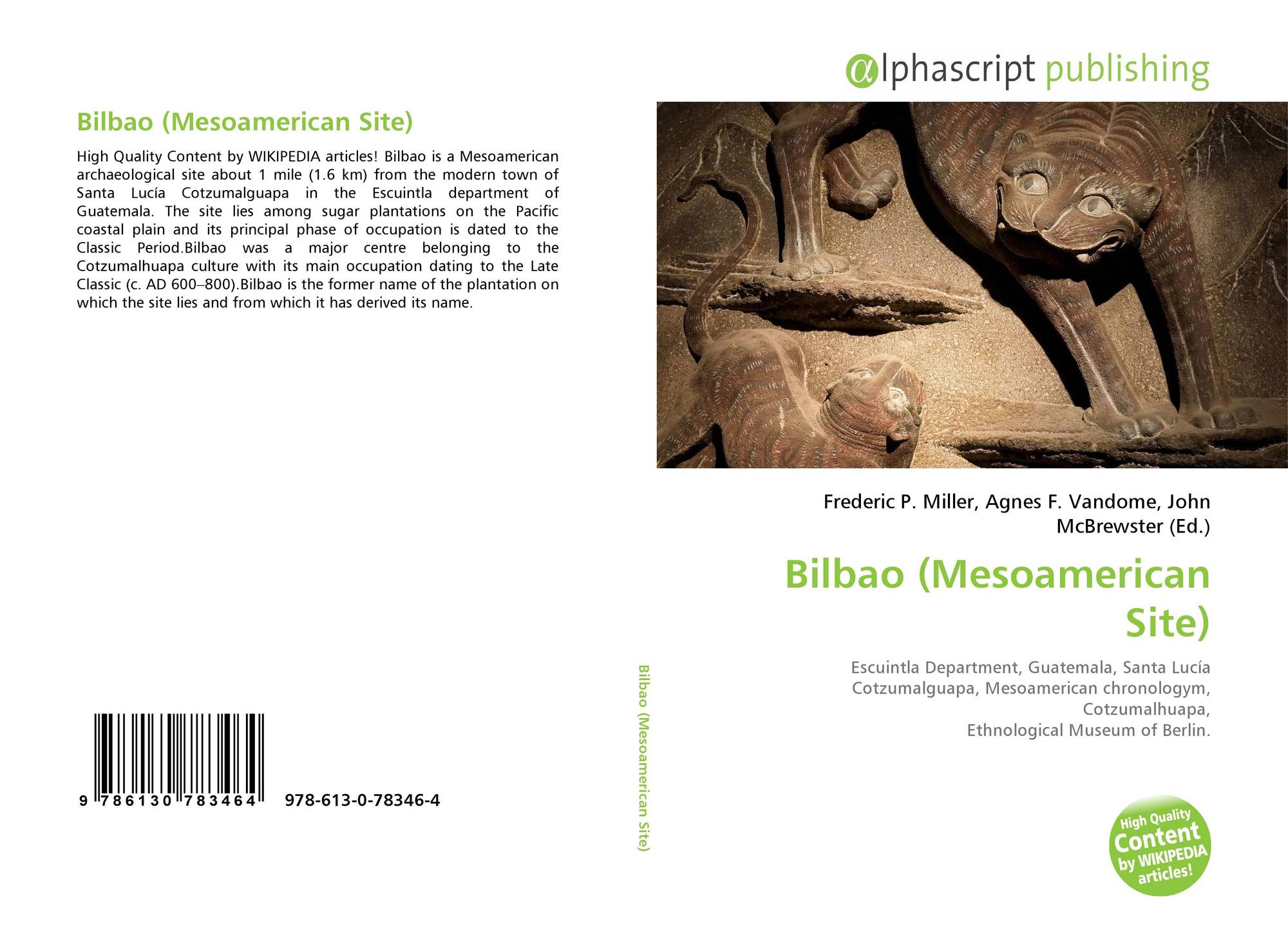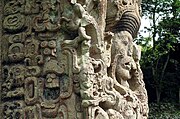Bilbao (Mesoamerican site)
Bilbao is an archaeological site in southern Guatemala. Along with other sites in the area (El Baul, El Castillo and several smaller sites) it is the Cotzumalhuapa culture attributed, which is in turn subsumed under the generic term of pre-Columbian Pacific cultures, with none of the archeological excavation sites located directly on the Pacific coast.
Location and climate
The former coffee plantation Finca Bilbao, after the archaeological site is named, is located about 2 km north of the town of Santa Lucía Cotzumalguapa in the department of Escuintla at an altitude of about 520 m above sea level. inst. , the now partially built upon or covered by sugar cane fields area of the finca is located about 50 km ( straight line ) from the Pacific coast. Due to the frequent rains and the nearby ocean, the prevailing climate is quite humid. The chain of volcanic mountains in the hinterland, including the common ash clouds ausspeiende Fuego, contribute to the subtropical weather.
History
As in El Baul, they are also the most monuments of the archaeological site of Bilbao in time to the Late Classic (ca. 600-800 AD) classified. Both sites included - along with El Castillo - an area of about 10 km ², that was connected by 11 to 14 m wide paved roads.
Some steles the archaeological site of Bilbao were discovered and described the mid-19th century. Tracings of the Austrian traveler Dr. Habel from 1862 came some monuments the former director of the Berlin Ethnological Museum, Adolf Bastian ( 1826-1905 ) note, which it acquired on a trip in 1876 for the museum. In the years 1877/8, a German by the name of Karl Hermann Berendt engaged in salvaging some stelae - to save weight - were sawn into boards. In 1881, these panels were shipped to Stettin, from where they were transported to Berlin, where she now in the Ethnological Museum - are to be seen - again added to totems.
Monuments
Few in relief stones are still remaining on the grounds of the finca. All other are in museums, including the Ethnological Museum in Berlin. The four arrived in Berlin stelae are designed stylistically defined; even if they can not wear any Datumsglyphen assume that they have been created in a close temporal association. Two of the stelae are surrounded by a frame; all four show bas-reliefs of ball players in the lower part and figures of gods, whose heads are made clear plastic and seem to emerge from the stone in the upper sphere. The ball players wear all Jochsteine ( Yugos ) around the hips and a rich headdress; their heads and their bent left arms are raised to heaven, his hands are partially bound with protective belt. Between the lower level and the sphere of the gods circular glyphs and / or speech bubbles like structures are seen.
All four ball players not ( defeated ) opponent is assigned; the central issue therefore appears not victory or defeat - to be - and frequently associated therewith subject of human sacrifice; rather, the induced by the game contact the ground seems to play a central role with the world beyond.
Due to the wide range of issues with the lack of inscriptions dating and the art of Cotzumalhuapa culture of the contemporaneous artistic legacies of the Maya is different.
Pictures
Stele No. 2
Stele No. 3
Stele No. 4










